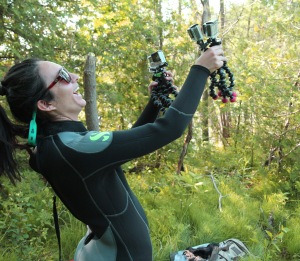Developing new detection techniques for rare freshwater fishes

Photo credit: Dustin Raab
My PhD’s focus is to develop novel detection techniques for rare freshwater fishes. In many cases, sampling for rare freshwater fishes, such as species at risk, may be restricted due to potential stress and mortality from handling in the field. The inability to sample fishes at risk reduces our ability to adequately monitor populations as required by recovery strategies and action plans. Therefore, developing new detection methods that do not require physical handling of these species at risk is required. Underwater visual analysis (UWVA) and environmental DNA (eDNA) are passive methods gaining popularity in freshwater systems. UWVA uses underwater cameras and/or snorkel surveys, while eDNA tests for the DNA of organisms from water samples to assess species richness and abundance. These novel methods could also be used to detect early invaders, which is important to optimize the success of eradication attempts.
The overarching goal of my thesis is to develop UWVA using cameras to increase our ability to detect rare species and decrease imperfect detection. The specific objectives of my thesis are: 1) to compare novel and conventional sampling methods; 2) to develop the UWVA technique to optimize efficiency for detecting rare fishes; 3) to develop algorithms that will estimate species abundances and species richness based on camera images; and, 4) to explore the applications of UWVA and eDNA.



